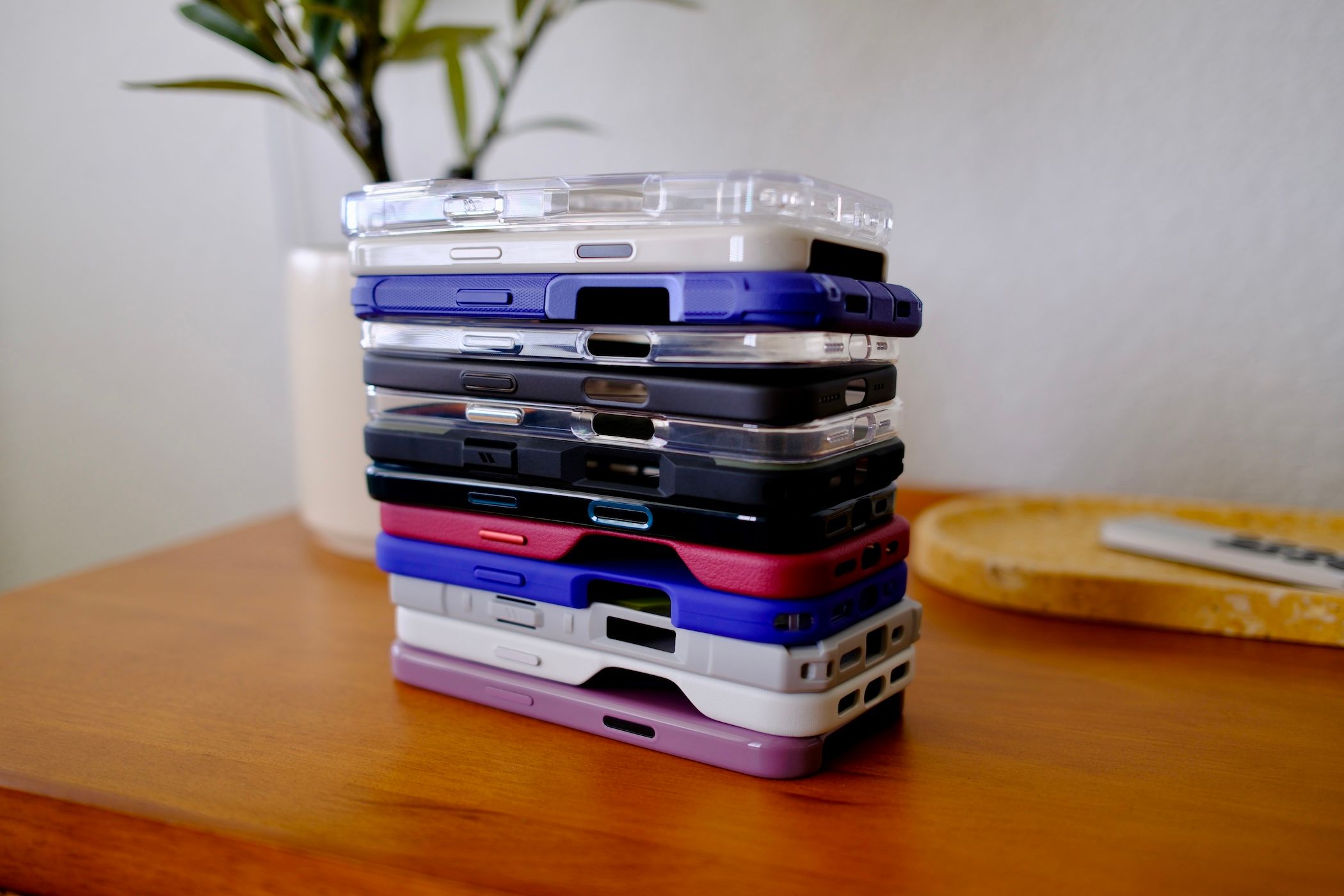Key Takeaways
- The new Camera Control button added to the iPhone 16 presents a challenge for case makers.
- Case solutions for Camera Control range from completely open to fully covered.
- The best case option for you will depend on whether you prioritize drop protection, usability, or design aesthetics.
Apple added a Camera Control button to its lineup of iPhone 16 devices and with it comes a new challenge for case makers. I went hands-on with a bunch of iPhone 16 Pro cases to see how they’re handling the new button and what I think works (and what doesn’t).
What Is Camera Control on iPhone 16?
Camera Control is a new button dedicated to opening the camera app, changing settings within the app, and snapping pictures. It’s built into the side of the iPhone 16 and iPhone 16 Pro (including Plus and Max models), underneath the Side button on the right edge of the device. It’s just one reason that your old case won’t fit the new phone.
So far, case manufacturers have devised three primary solutions for the new button. The first is to completely avoid impacting Camera Control by leaving the spot blank on the side of the phone. This leaves an area exposed to falls, but it doesn’t get in the way of your finger when maneuvering around the area.
A lot of manufacturers are also cutting out an oval just big enough to expose the Camera Control. This keeps a lot of the case protection in place but might make it hard to swipe on the touch-sensitive button. The least used solution so far involves covering Camera Control with a special material that will still respond to swipes from your finger.
A Completely Open Camera Control Area
Completely open design
The easiest option for case manufacturers to handle the Camera Control is to leave the surrounding area completely open. Plenty of companies like Otterbox, Moft, ESR, and Nomad have cases like this that avoid covering that part of the phone completely.
In terms of usability, this solution should be the most accessible. There’s no plastic, rubber, or leather material to get in the way. It won’t inhibit using the Camera Control at all. The flip side is that the wide opening will probably feel weird to hold. When holding the phone vertically in one hand, the void could be quite noticeable.
If you’re primarily using a case for drop protection, then leaving an entire section of the phone’s side exposed might be concerning for you. I don’t think it will be that big of a deal in practice, but it’s worth keeping in mind since some cases will have wider exposure areas than others. For example, Moft’s vegan leather Snap Case MOVAS has a relatively small cutout and might be one of the best examples of its kind.
A Partially Open Camera Control Hole
Cutout just for the Camera Control
The middle ground between a completely open and covered Camera Control is a partially exposed one. These types of cases have an open oval that covers the entire side of the phone, but leave the Control uncovered so that it can detect swipes from your finger.
There are a lot of differences in how companies leave this hole exposed. The thicker the case, the deeper the hole needs to be to reach it. One of my favorites here is Under Armor Gear’s (UAG) Pylo For MagSafe case which slopes on both sides of the button naturally. Totallee’s clear MagSafe case also has a nice smooth slope that shouldn’t feel too uncomfortable when using the Camera Control.
A Covered Camera Control
Covered Camera Control design
At the moment, there are only a couple of cases that completely cover the Camera Control. Since Camera Control is not only a button, but also has touch-sensitive functionality, these cases from Apple, Beats, and Otterbox can sense your swipes through the case.
Otterbox uses this style for its Lumen Series and states on its website that it has a “sapphire crystal, coupled to a conductive layer to communicate finger movements to the Camera Control.” Apple uses that exact language on its site to describe the Beats cases too.
This solution is probably the most pleasing and least disruptive. Your finger shouldn’t get caught on a case’s lip and no lint or dust can get into the case or behind the phone. I would guess that more companies add cases with this style of Camera Control cover as time goes on.
Apple charges $50 for its Silicone Case and $50 for the Beats Case. Otterbox charges $70 for its Lumen Series case so completely covering the Camera Control might cost a premium.
What to Look For When Buying a Case
While I like the feel of some of these cases better than others, I didn’t find one that I hated. Each of the different Camera Control case styles has at least some merit or benefit.
If you’re using a case for serious drop protection, I would suggest avoiding those with a completely exposed cutout. The Camera Control with sapphire crystal covering is the most secure and least likely to allow the phone to become damaged. You still might want to grab an AppleCare+ plan for unlimited repairs, just in case.
On the other hand, if your use of a case is more about style, function, or basic levels of protection, then you should be good with whichever case catches your eye. Just make sure it has MagSafe for wireless charging and accessories.
Source link
